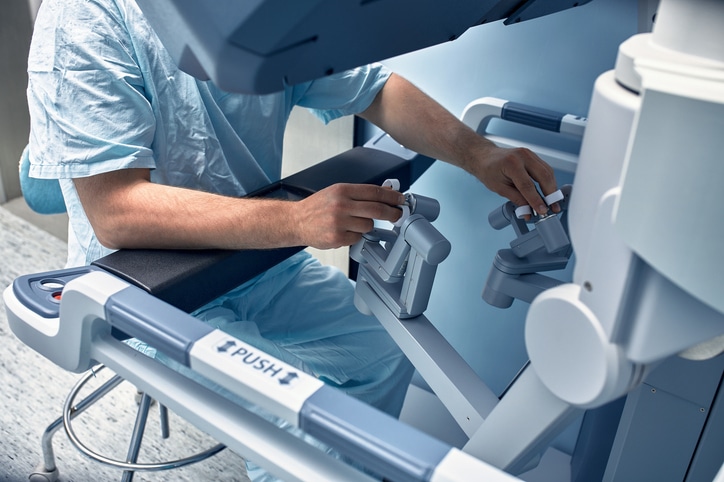Each year, more than 100,000 American women are diagnosed with a form of gynecological cancer, and their prognoses are improving with each new treatment that becomes available.
“Cancer therapy is always growing,” says Brandon Roane, MD, a gynecological oncologist on the medical staff at Methodist Charlton Medical Center. “There are new innovative techniques in cancer treatments that are meant to be more customized to the patient.”
Among these advances are robot-assisted surgery to shorten the recovery time after a hysterectomy, proton therapy to reduce side effects caused by less-precise radiation, and precision medicine, which often harnesses the body’s immune system to fight cancer.
“This is a personalized medicine,” Dr. Roane says. “It allows us to customize our cancer therapy for each patient versus just applying a blanket treatment based on where the tumor could come from.”
Dr. Roane shared the latest advances in his field during a presentation to Methodist Generations, an education and enrichment program for older adults.

ROBOTIC SURGERY
Robot-assisted surgery uses small incisions and robotic arms to allow for minimally invasive techniques and greatly improve a surgeon’s precision.
“This machine allows me to be very precise on a millimeter level so that my surgery is more accurate,” Dr. Roane says. “That means less blood loss, fewer complications, and better surgical margins to ensure only the tumor is removed, not the healthy tissue around it.”
This shift from traditional open surgical techniques has drastically improved patient recovery. Twenty years ago, a hysterectomy involved large incisions and days of recovery in the hospital. Now, with robotic surgery, incisions are often just a centimeter wide, and many patients go home the same day.
“The robot has really changed cancer care and improved quality of life for post-operative patients.” Dr. Roane says. “And here at Charlton, we have two robot rooms where this surgery is conducted.”

PROTON THERAPY
Radiation has long been used to treat cervical and other pelvic cancers, but older methods often exposed the healthy tissue surrounding the tumor to harmful X-rays.
“We used to radiate the entire pelvis,” Dr. Roane says. “Now we use intensity-modulated radiation therapy (IMRT) to shape the radiation beam to the tumor, protecting nearby organs from unnecessary exposure.”
Proton therapy takes things a step further by using a narrow beam of protons rather than X-ray radiation. Protons are much larger particles and disperse all their energy into the tumor rather than passing through the body and potentially affecting healthy tissue.
“Proton therapy is being studied intensely in oncology therapies.” Dr. Roane says. “We want to make sure that we’re producing fewer side effects but are just as equally and effectively treating the cancer.”

PRECISION MEDICINE
Chemotherapy has been a cornerstone of cancer treatments for decades, but it also harms healthy cells, causing side effects like hair loss, fatigue, and nausea. Now, targeted therapies like immunotherapy and precision medicine are shifting that paradigm.
“Instead of hitting all fast-dividing cells, we can look for unique markers on a patient’s tumor and match them with drugs that go directly after that protein,” Dr. Roane explains.
Precision medicine is a game-changer in cancer treatment because it allows doctors to customize cancer remedies to each patient. Dozens of drugs take into account differences in a person’s genetic makeup, environment, and lifestyle to create more effective and targeted care.
“In the right patient,” Dr. Roane says, “these targeted drugs can be effective and avoid the side effects of conventional chemotherapy.”
Precision medicine includes immunotherapy, treatments that use a patient’s immune system to fight cancer.
“Tumors often grow by suppressing a patient’s immune system,” Dr. Roane says. “Immunotherapy drugs reverse that process to help the immune system join the fight.”
While many of these innovative new treatments are still evolving, one thing is clear: The future of cancer care is becoming more individualized, less invasive, and more hopeful.
“There’s a lot of optimism for the future of cancer therapy.” Dr. Roane says. “I’m happy to be a part of that and look forward to some of the new developments that are on the horizon.”






